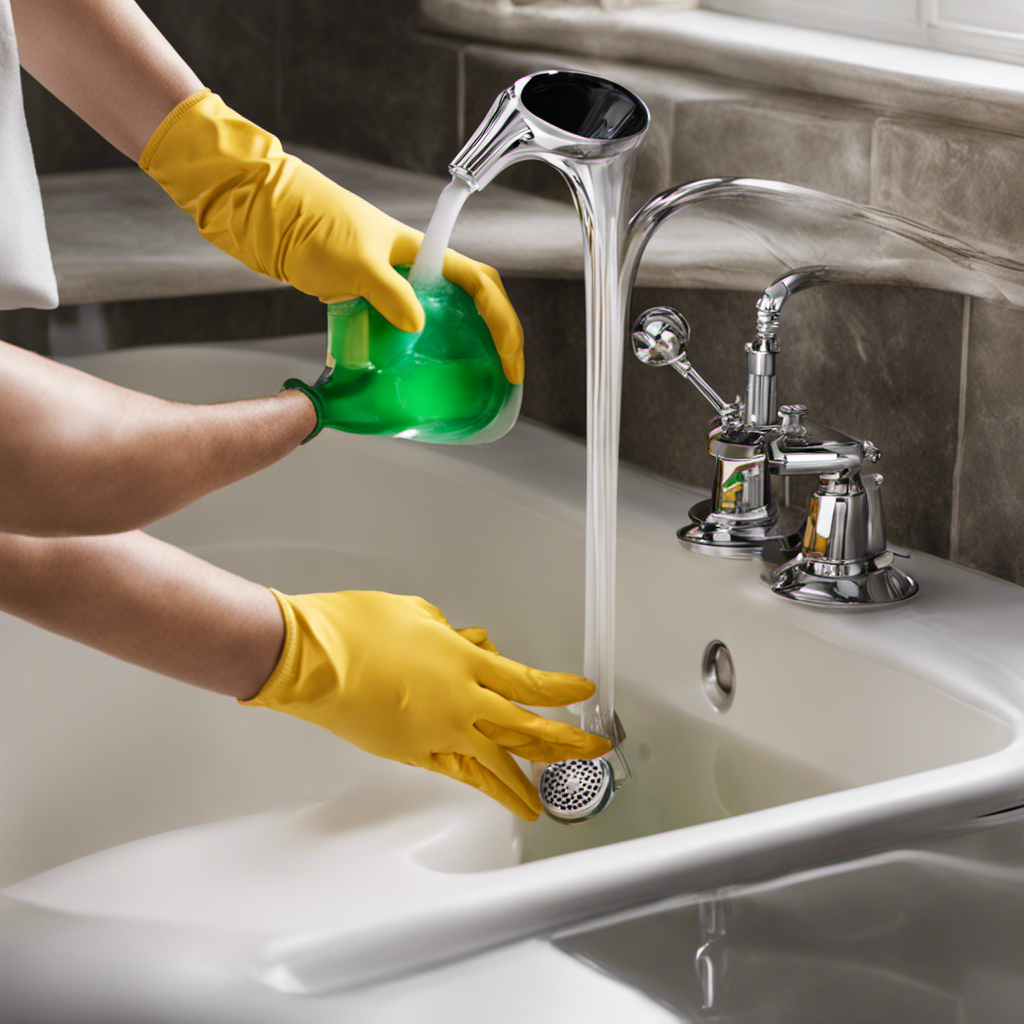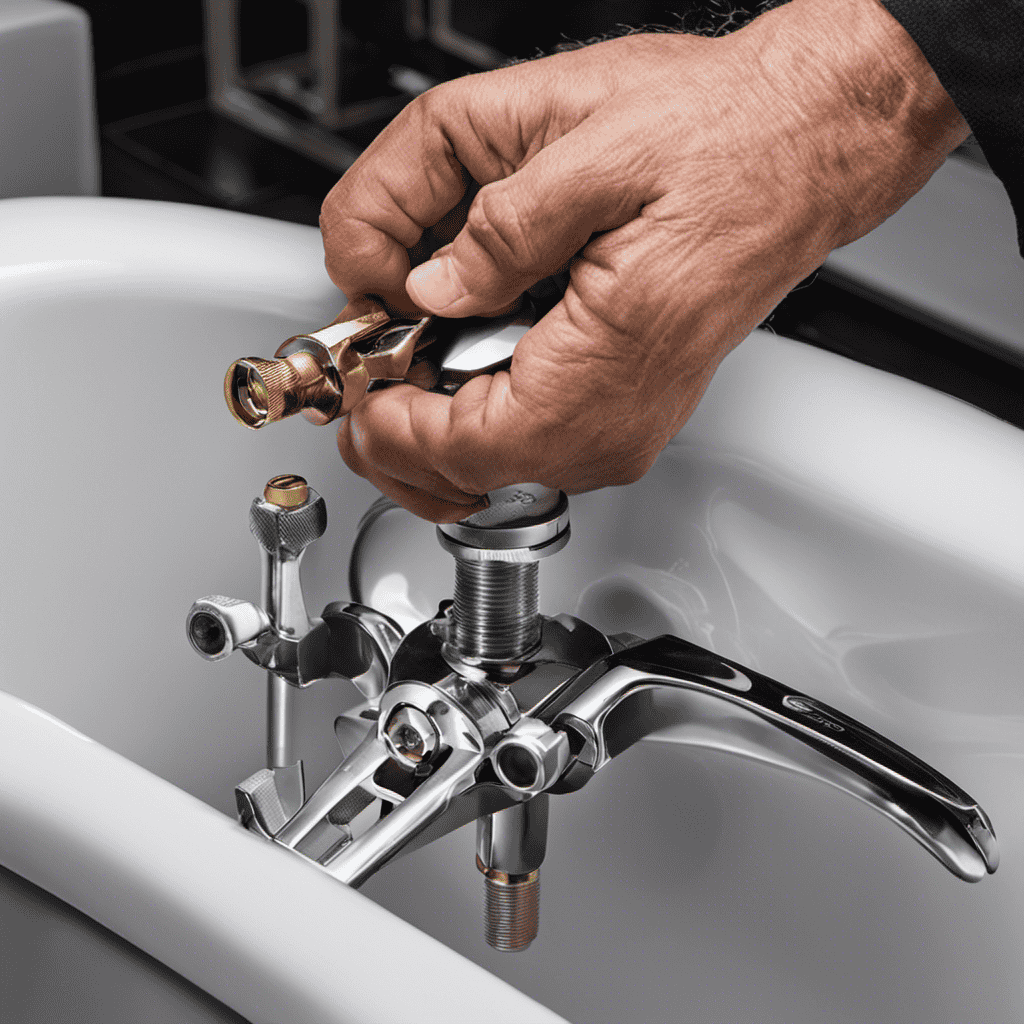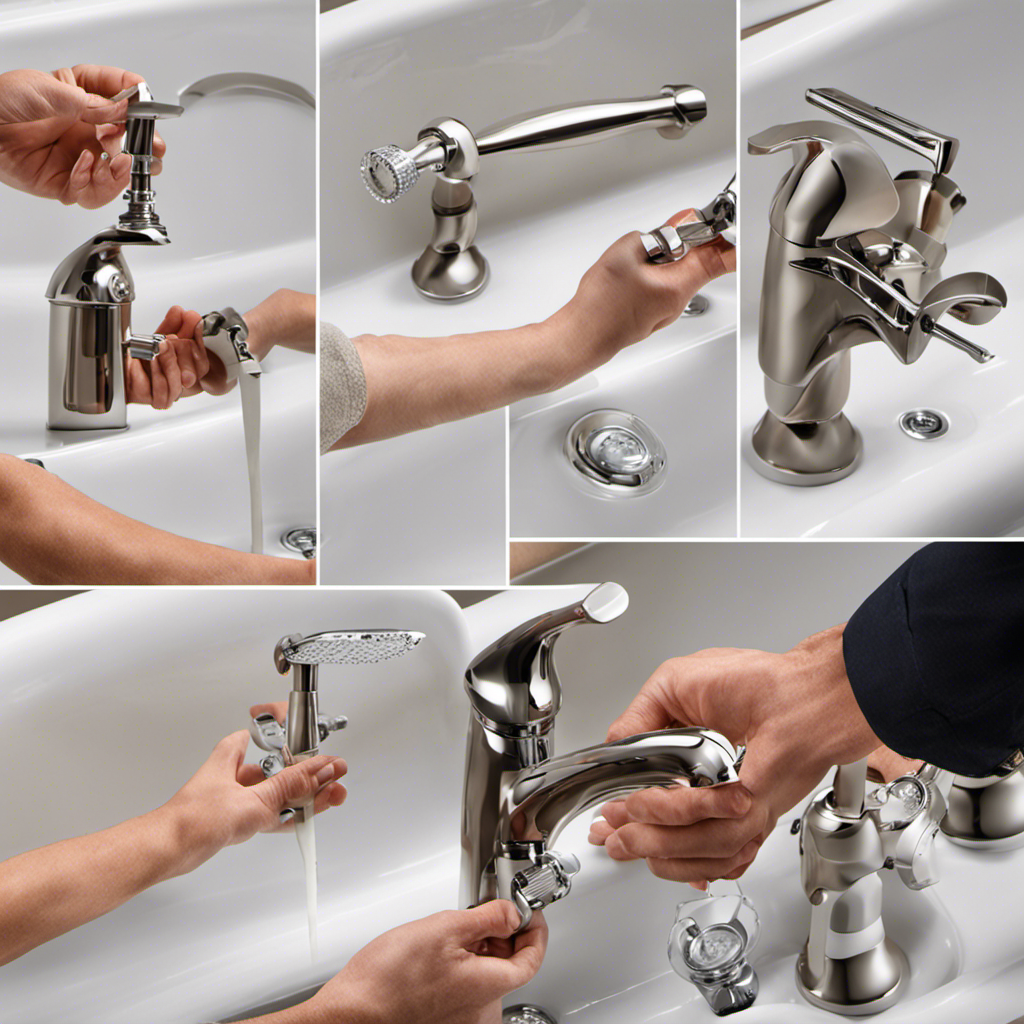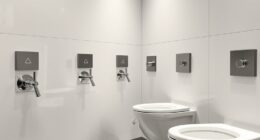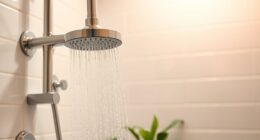As I stood ankle-deep in water, desperately watching it rise higher and higher, I realized I had a blocked bathtub drain. Frustrated but determined, I set out to find a solution.
In this step-by-step guide, I will share the techniques I discovered to unblock a bathtub drain. From understanding the cause of the blockage to using a plunger and drain snake, I will show you how to tackle this common household problem.
Say goodbye to clogged drains and hello to a smoothly flowing bathtub!
Key Takeaways
- Hair and debris accumulation can cause slow draining and blockages in a bathtub drain.
- Soap residue can contribute to the blockage and worsen it over time.
- Promptly addressing these issues is important to prevent more serious problems.
- Using tools like a plunger, drain snake, and enzyme-based drain cleaner can help remove blockages effectively and safely.
Understanding the Cause of the Blockage
To understand why your bathtub drain is blocked, you should take note of any hair or debris that might have accumulated over time. These are the main causes of slow draining and can eventually lead to a fully blocked drain.
Signs of a blocked drain include water pooling in the tub while you’re showering and slow draining water after you’ve finished. When hair and debris accumulate in the drain, they create a blockage that restricts the flow of water. Additionally, soap residue can build up over time, further contributing to the blockage.
It’s important to address these issues promptly to prevent more serious problems down the line. In the following sections, I will guide you through the steps to unblock your bathtub drain effectively.
Gathering the Necessary Tools and Materials
You’ll need a few tools and materials to get started. Here are the items you’ll need for bathtub maintenance and choosing the right drain cleaner:
- Plunger: This tool creates pressure to dislodge the blockage.
- Drain snake: It helps remove stubborn clogs by physically breaking them up.
- Rubber gloves: Protect your hands from any debris or chemicals.
- Bucket: Use it to catch any water or debris that may come out during the process.
- Enzyme-based drain cleaner: This type of cleaner is effective for organic clogs and is environmentally friendly.
Before starting the unclogging process, make sure to read the instructions on the drain cleaner carefully. It’s important to choose the right cleaner for your specific bathtub.
Removing Hair and Debris From the Drain
To ensure you don’t encounter any future clogs in your bathtub drain, there are a few key points to keep in mind.
Firstly, adopting effective drain cleaning methods is essential. This includes properly removing hair and debris from the drain on a regular basis.
Additionally, using natural cleaners can be a safer and eco-friendly alternative to harsh chemical products.
Preventing Future Clogs
Regularly cleaning out hair and soap residue from your bathtub drain can help prevent future clogs. It’s important to maintain your drain to ensure proper water flow and avoid costly repairs. Here are some eco-friendly drain cleaning solutions to keep your drain clear:
-
Use a mixture of baking soda and vinegar: Pour half a cup of baking soda, followed by half a cup of vinegar, down the drain. Let it sit for about 30 minutes, then flush with hot water.
-
Install a drain strainer: Place a drain strainer over the drain to catch hair and debris before they go down the drain.
-
Use a plunger: If you have a clog, use a plunger to create suction and dislodge the blockage.
-
Regularly flush with hot water: Once a week, pour boiling water down the drain to dissolve any buildup.
-
Consider enzyme-based cleaners: These cleaners use natural enzymes to break down organic matter without harming the environment.
Effective Drain Cleaning Methods
One effective method for keeping your drain clear is using a plunger to create suction and dislodge any blockages. To start, ensure that the plunger has a good seal around the drain opening. Then, vigorously plunge up and down for about 30 seconds. This will create pressure and suction that can dislodge any debris or clogs.
If the plunger doesn’t work, you can try using cleaning products specifically designed for drain cleaning. These products often contain powerful chemicals that can dissolve or break down the blockage. However, it’s important to follow the instructions carefully and use protective gloves and eyewear.
If all else fails, it may be time to call in professional drain cleaning services. They have the expertise and specialized tools to effectively clear any stubborn clogs.
Using Natural Cleaners
You can easily maintain the cleanliness of your drains by using natural cleaners. These remedies are not only effective but also safe for the environment. Here are five DIY techniques using natural remedies to keep your drains clean:
-
Vinegar and Baking Soda: Pour half a cup of baking soda down the drain, followed by half a cup of vinegar. Let it sit for 30 minutes, then flush with hot water.
-
Salt and Hot Water: Mix half a cup of salt with boiling water and pour it down the drain. This helps dissolve grease and prevents clogs.
-
Lemon Juice: Squeeze fresh lemon juice down the drain and let it sit for 10 minutes. Rinse with hot water to remove any buildup and eliminate odors.
-
Borax and Vinegar: Mix half a cup of borax with one cup of vinegar. Pour it down the drain and let it sit overnight. Flush with hot water in the morning.
-
Enzyme Cleaners: Use enzyme-based drain cleaners that break down organic matter and prevent clogs.
Using these natural remedies will not only keep your drains clean but also save you money on expensive chemical cleaners. Give them a try and enjoy a clog-free drain!
Using a Plunger to Unclog the Bathtub Drain
To unclog the bathtub drain using a plunger, start by creating a tight seal around the drain with the plunger. Ensure that the plunger completely covers the drain opening to maximize suction. Once you have a good seal, push the plunger down firmly and then pull it up quickly. This action creates pressure and suction that can dislodge the clog. Repeat this plunging motion several times, applying consistent pressure.
If the clog doesn’t clear after a few attempts, try using a plunger with a different shape or size. There are also plunger alternatives available, such as drain snakes or drain augers, which can be effective in removing stubborn clogs. These alternatives allow you to manually unclog the drain without the use of chemicals, making them a safer option for both your plumbing system and the environment.
Using a Drain Snake to Clear the Blockage
When it comes to clearing a stubborn blockage in the bathtub drain, the choice between using a snake or a plunger can make a big difference in the effectiveness of the unclogging process.
In order to demonstrate the proper technique for using a snake, it is important to follow a step-by-step approach.
Additionally, knowing the common locations where blockages occur can help identify the best method to tackle the problem.
Snake Vs. Plunger
The plunger is more effective at unclogging a bathtub drain than the snake. When it comes to clearing a blockage, the plunger proves to be a reliable tool. Here are some reasons why the plunger is a better choice:
- The plunger creates a strong suction that helps dislodge the clog.
- It is easy to use and requires minimal effort.
- The plunger is an affordable tool that can be found in most households.
- Unlike the snake, the plunger does not require any special skills or training.
- Using a plunger is a quick and efficient way to unclog a drain without the need for professional assistance.
While there are plunger alternatives and professional drain cleaning services available, the plunger remains a popular and effective choice for clearing bathtub drain clogs.
Proper Technique Demonstration
Check out this video to see how you can effectively use a plunger to clear a clog in your bathtub.
The first step is to ensure that the plunger is clean and free from any debris.
Next, fill the bathtub with enough water to cover the plunger’s cup.
Place the plunger over the drain and firmly press down to create a seal.
Once the seal is formed, rapidly push and pull the plunger’s handle to create suction and pressure.
Continue this motion for about 30 seconds to a minute.
After that, remove the plunger and check if the water drains properly.
If the clog is not completely cleared, you may need to repeat the process.
Once the clog is cleared, it is important to clean and dry the plunger properly before storing it.
Additionally, remember to take safety precautions such as wearing gloves and goggles to protect yourself from any potential splashes or spills.
Common Blockage Locations
To effectively clear a clog, you should be aware of common blockage locations in your plumbing system. Here are the signs of a clogged bathtub drain and the causes of slow drainage:
- Hair buildup: Hair can easily accumulate in the drain, leading to blockages over time.
- Soap scum: Soap residue can stick to the sides of the drain pipe, causing a narrowing of the passage.
- Mineral deposits: Hard water can leave behind mineral deposits that restrict water flow.
- Foreign objects: Small items like jewelry or toys can accidentally fall into the drain and cause a blockage.
- Pipe misalignment: If the pipes are not properly aligned, it can create areas where debris can accumulate and cause clogs.
Preventing Future Bathtub Drain Blockages
Make sure you regularly clean your bathtub drain to avoid future blockages. Preventing clogs and maintaining drain health is essential to ensure a smoothly functioning bathtub drain. Here are some steps to follow:
-
Use a drain strainer: Install a strainer over your bathtub drain to catch hair, soap scum, and other debris. This will prevent them from entering the drain and causing blockages.
-
Flush with hot water: Once a week, pour boiling water down the drain to melt away any accumulated grease and soap residue. This will help keep the drain clear and prevent clogs from forming.
-
Avoid pouring grease down the drain: Grease can solidify and stick to the inside of the drain, leading to blockages. Dispose of grease in a separate container instead.
-
Regularly clean the drain: Use a mixture of baking soda and vinegar or a specialized drain cleaner to remove any buildup in the drain. Follow the instructions on the product for effective results.
Conclusion
In conclusion, unclogging a bathtub drain can be a frustrating and time-consuming task. However, with the right tools and techniques, it is possible to clear the blockage and restore your bathtub to its full functionality.
Just like removing the obstacles in our lives, unclogging a drain requires patience, persistence, and the willingness to get our hands dirty. So, next time you find yourself facing a blocked drain, remember that with a little effort and know-how, you can overcome any obstacle that stands in your way.

